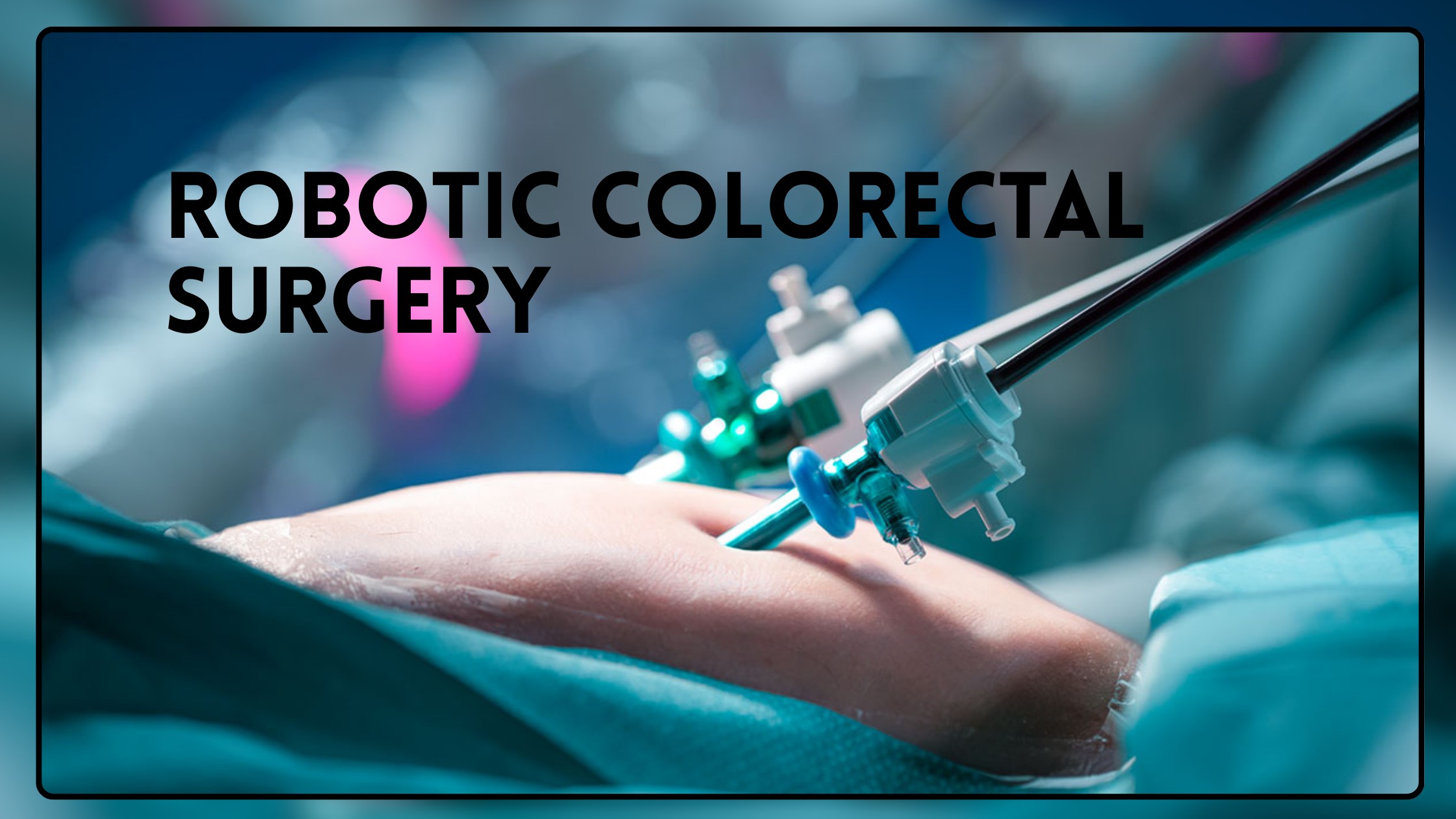Colorectal surgery has long been one of the most important specialties in modern medicine. From treating colorectal cancer to managing benign conditions like diverticulitis, inflammatory bowel disease, and rectal prolapse, these procedures directly impact the health and quality of life of millions of patients worldwide. Traditionally, open colorectal surgery involved large abdominal incisions, long hospital stays, and significant recovery times. Over the past two decades, minimally invasive approaches such as laparoscopy transformed the field, offering smaller incisions, reduced pain, and faster recovery.
Today, evolution has taken another leap forward with robotic colorectal surgery. By combining the principles of minimally invasive surgery with advanced robotic systems, surgeons can now operate with unprecedented precision, flexibility, and control. This blog explores what robotic colorectal surgery is, how it works, its benefits, limitations, and why it is becoming the future of colorectal procedures.
What is Robotic Colorectal Surgery?
Robotic colorectal surgery is a minimally invasive surgical technique that uses robotic systems (such as the da Vinci Surgical System) to perform operations on the colon and rectum. Instead of making large open incisions, surgeons operate through a few small incisions in the abdomen, inserting robotic arms equipped with miniaturized surgical instruments and a high-definition 3D camera.
Unlike traditional laparoscopy, where the surgeon manipulates long instruments directly, robotic surgery allows the surgeon to sit at a console and control the robotic arms. The system translates the surgeon’s hand movements into highly precise micro-movements of the instruments inside the patient’s body.
How the Procedure Works
- Patient Preparation – As with any colorectal surgery, patients undergo preoperative assessments, bowel preparation, and anesthesia.
- Small Incisions – The surgeon makes a few small incisions (typically 5–12 mm each) to insert trocars (ports) for the robotic arms and camera.
- Docking the Robot – The robotic system is positioned over the patient, and the instruments are connected to the robotic arms.
- Console Control – The surgeon sits at the console, viewing the operative field in magnified 3D. Using hand and foot controls, the surgeon directs the robotic arms, which mimic human wrist movements but with greater precision and range of motion.
- Surgical Resection/Repair – The diseased section of the colon or rectum is carefully resected, and the healthy sections are reconnected (anastomosis). In cancer cases, lymph nodes may also be removed.
- Closure – Once the surgery is complete, the instruments are removed, and the small incisions are closed with sutures or surgical glue.
Conditions Treated with Robotic Colorectal Surgery
Robotic surgery is increasingly used for a variety of conditions, including:
- Colorectal cancer – removal of cancerous sections of the colon or rectum.
- Diverticular disease – surgical resection of damaged or infected bowel segments.
- Inflammatory bowel disease (Crohn’s disease, ulcerative colitis) – removal of diseased bowel when medications fail.
- Rectal prolapse – repairing rectal support structures.
- Benign tumors or polyps not removable through endoscopy.
- Strictures or blockages in the colon or rectum.
Benefits of Robotic Colorectal Surgery
Robotic-assisted surgery builds on the advantages of laparoscopy while addressing some of its limitations. Key benefits include:
1. Greater Precision and Dexterity
Robotic arms mimic the natural motion of the human wrist but allow for finer, more controlled movements. This is especially valuable in the narrow confines of the pelvis, where rectal surgery is technically challenging.
2. Enhanced Visualization
The robotic camera provides a magnified, high-definition 3D view of the operative field, giving surgeons a clearer perspective compared to traditional laparoscopy. This helps in identifying delicate structures like nerves and blood vessels.
3. Minimally Invasive Approach
Like laparoscopy, robotic surgery requires only small incisions, resulting in:
- Less blood loss
- Reduced postoperative pain
- Minimal scarring
- Faster recovery times
4. Better Outcomes for Complex Surgeries
For rectal cancer surgery, robotic systems allow surgeons to work with precision in deep pelvic spaces, reducing the risk of nerve damage that can affect bladder or sexual function.
5. Shorter Hospital Stays
Patients often recover faster and can leave the hospital sooner compared to those undergoing open surgery.
Risks and Limitations
While robotic colorectal surgery has many benefits, it is not without challenges:
- Cost – Robotic systems are expensive to purchase and maintain, which may increase overall healthcare costs.
- Operating Time – In some cases, robotic surgery may take longer than laparoscopy due to setup and docking.
- Availability – Not all hospitals are equipped with robotic systems, especially in developing regions.
- Learning Curve – Surgeons require specialized training and experience to maximize the potential of robotic technology.
Patient Experience and Recovery
For patients, the postoperative experience of robotic colorectal surgery is generally favorable compared to open surgery. Most patients can expect:
- Reduced need for pain medications
- Early mobilization and walking within 24 hours
- Return to normal diet faster
- Shorter hospital stays (3–5 days on average vs. 7–10 days for open surgery)
- Faster return to daily activities and work
However, recovery still depends on the individual’s health condition, the complexity of the surgery, and the underlying disease being treated.
Future of Robotic Colorectal Surgery
The field is rapidly evolving, with innovations making robotic systems more accessible, efficient, and versatile. Some promising future directions include:
- Smaller and More Affordable Robots – Expanding availability beyond large tertiary hospitals.
- Improved Haptic Feedback – Allowing surgeons to “feel” tissue resistance for even greater accuracy.
- Single-Port Surgery – Performing complex colorectal resections through a single small incision.
As technology advances and more surgeons become trained, robotic colorectal surgery is expected to become the standard of care for many conditions.
Conclusion
Robotic colorectal surgery represents a significant step forward in minimally invasive surgical care. By combining enhanced precision, better visualization, and improved ergonomics, it offers both patients and surgeons substantial advantages over traditional open and laparoscopic methods.
While challenges remain—such as cost and accessibility—the benefits in terms of reduced pain, faster recovery, and potentially better long-term outcomes make robotic surgery a promising option for many patients requiring colorectal procedures. As technology continues to advance, robotic colorectal surgery will likely play a central role in shaping the future of surgical care.



